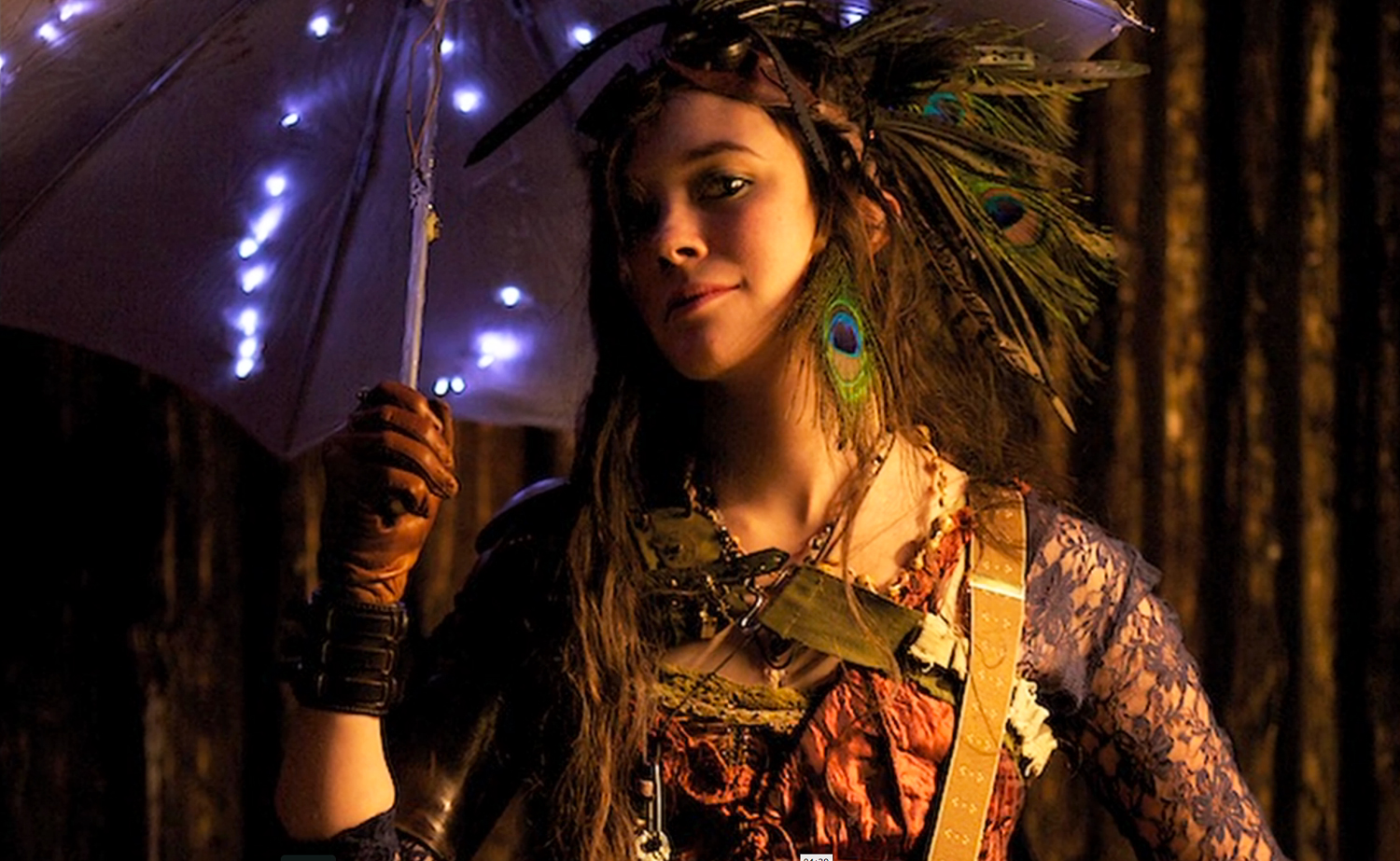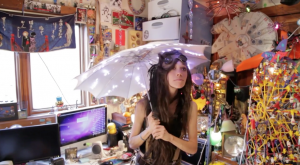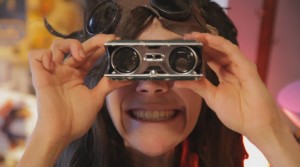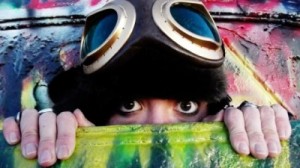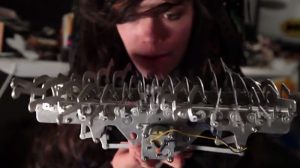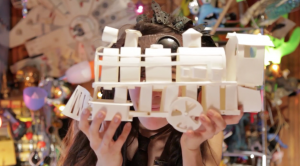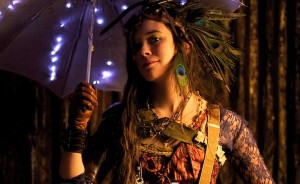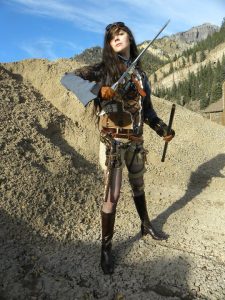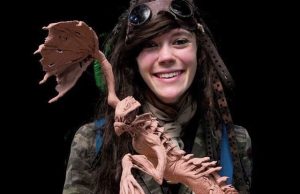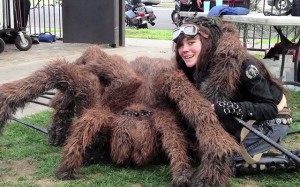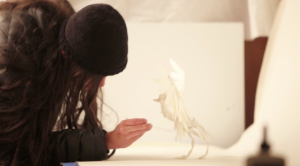Zina Lahr was found dead outside of Ouray, Colorado, in November.
The mayor was the last person to see Zina Nicole Lahr alive. Sometime in the early afternoon of Wednesday, November 20, Bob Risch, a 73-year-old native of Ouray, Colorado, and its mayor from 2007 until this January, noticed the colorful and well-known local strolling east. She was dressed in pants and a light jacket and was wearing Vibram Five Fingers toe shoes instead of winter boots.
“He saw her going down the alley just to the east of our property,” recalls Risch’s wife, Karen. “It was starting to snow, and it was cold. He didn’t even tell me, because, of course, we didn’t know anything was wrong until her mother called about 6:30 and said that Zina hadn’t come home.”
Bob and Karen, neighbors of the Lahrs, had watched Zina grow up. When she was ten, Zina had helped Karen train her search dog, Lyra, a shepherd-Labrador mix, to find people in the mountains. Karen would dig a snow cave, and Zina would climb in with a beacon and radio. “She said once that she loved having Lyra’s paws come through the snow when the dog found her,” Karen says.
Zina had been heading toward Cascade Falls, a popular hiking destination on the Perimeter Trail, a four-year-old footpath that rings the town. Ouray, population 1,000, is in southwestern Colorado, where it sits at the head of a box canyon on the Uncompahgre River, right where U.S. 550—the most dangerously avalanche-prone stretch of highway in the U.S.—descends from Red Mountain Pass. A Main Street billboard for a summer jeep-touring company calls Ouray The Little Switzerland of America. Above town, the peaks and ridgelines of the San Juan Mountains rise so abruptly that their summits are hidden from view by shoulders of ore-rich rock that still keeps many local miners employed.
“Before we had ice climbing, if you came into Ouray in the middle of the winter, it was an incredibly dead place,” says Bob Risch. “At 8 p.m. on Main Street, you were more likely to see deer than people.”
Zina with a sea monster she called “Catalyst.” Photo: Courtesy of the Lahr family
After the Ouray Ice Park formally opened in 2001, the town cemented its position as the sport’s American mecca. Since then, more motels and restaurants have sprouted up, along with new trails that traverse the steep hillsides where Zina hiked most days. On November 20, she snapped some photos with her phone and picked a small bit of moss for her grandmother Patricia that was later found in her pants pocket.
“Zina would go out on an adventure every day, and she would get some little piece of nature—a stone, a fossil, beautiful fall leaves,” says her mother, Cindy Lahr. Cindy commuted to work as the office manager at a dental practice in Montrose, 40 miles north. “They would discuss this little memorabilia that Zina would bring back from her adventure,” says Cindy. “And they would weave it into a story that they were going to write together.”
At some point on the 20th, Zina climbed above the Perimeter Trail, possibly to get a better view of town and its surrounding peaks. Then she slipped. Or rockfall hit her from above, crushing her skull. Nobody is quite sure what happened, but the police ruled out foul play. “From what I understand of the coroner’s report, she was not aware of her impending death, so she didn’t have any adrenaline in her system,” says Sean DeLand, 33, a Telluride-based television producer and musician whom Zina had seen on and off since 2012. Friends and family take solace in the likelihood that she didn’t bleed or suffer much.
After she died, a five-minute video surfaced of Zina standing in her bedroom in her grandmother’s house, which had shelves crammed with robots she’d built and other art projects. In the video, she explains that she has “creative compulsive disorder” and can’t stop making things—especially robots. The video was the first hint at what Zina was: an impossibly innocent and gifted eccentric on the verge of breaking out in the world of animatronics and stop motion. It was an audition for a Los Angeles–based reality show called Jim Henson’s Creature Shop Challenge, a SyFy channel program premiering March 25 that’s sort of like Project Runway for animatronics artists. She’d turned down a spot on the show in order to move home and care for her grandmother, who’d been diagnosed with lung cancer in September.
The clip, called “The Work of Zina Nicole Lahr,” went viral and has since been viewed half a million times on Vimeo. There was something about this girl in steampunk chic—with peacock-feather hair falls and aviator goggles always perched on her forehead—that struck people as incredibly genuine. In the video, Zina, looking like a Jules Verne–era tinkerer with some Mad Max thrown in, says she considers herself a canvas as much as anything else.
A Reddit group generated hundreds of comments, most of them from people who wanted to understand how someone like Zina could even be real. “Where the hell does a person like this come from?” wrote one. “I think most people, myself included, eventually become jaded and lose that sense of wonder we once had when we were children. Based on the little bit I’ve seen and read, though, it seems she managed to keep that, which is incredible to me. I feel like there is an incredible lesson to be learned from the way she appears to have lived her life, but I can’t grasp at what it is.”
A few less charitable viewers wondered whether drugs or alcohol might have been a factor in Zina’s death, since she appeared underweight and looked as if she’d just come back from Burning Man.
“Oh, no. Zina’s never been there,” says Stormy Pyeatte, one of her childhood friends and the filmmaker who shot the video. “This girl’s never had a drop of alcohol in her life. She’s never driven a car—but she could take a car engine apart.”
If Zina had a secret, it was virtue rather than vice: Like many of the people who surrounded her, she was a lifelong evangelical Christian, deeply spiritual and devoted to Jesus, though she was not very dogmatic or political. “One of my buddies who I play music with didn’t realize until after her funeral that religion or Christianity or faith was so important to Zina,” says Sean, who had first gotten to know Zina on Facebook because they share similar beliefs.
Before her death, Zina had begun to travel away from home for the first time, and it seemed as if life was just beginning for her. “I realize that this body has found its way back to Colorado,” she wrote in a philosophical ramble on her blog, Normally Odd in August 2013. “This is my third venture back to this base since I started my travels to California a little over a year ago for what started as a simple adventure of delivering wedding rings, and turned into an odyssey without a definitive end.”
The Lahrs moved to Ouray from College Station, Texas, in 1987. Zina was born in 1990. Her father left the family when she was seven, and she was raised and homeschooled by her mother and her mother’s parents. Zina’s grandfather, Keith, was an agricultural research scientist at Texas A&M. “My dad’s specialty was wheat,” says Cindy. “He developed some wheat strains with resistance to drought and disease.”
When Zina was eight, Cindy began routinely driving her to the John McConnell Math and Science Center of Western Colorado, in Grand Junction, 100 miles north, for an extracurricular program. McConnell, a former Los Alamos National Laboratories physicist, had started the center as a second career after retiring. He taught Zina how to read electrical schematics and to solder and connect capacitors and resistors to make machines. Then Zina figured out how to make mechanical arms, legs, and wings that moved naturally. She finished high school at 16 with a graduation ceremony on her grandmother’s front steps. “I’ve had lots of girls in programs who did very well, but she was just one of those unique ones who really took a love of this,” says McConnell. He and his wife came to Zina’s graduation, which was performed by her minister.
About a year after her graduation, Zina adopted her steampunk look. Her mom thinks she was inspired by Amelia Earhart or a photo of her paternal grandfather, who was a pilot.
Zina in her room. Photo: Stormy Pyeatte
“She could take any bits of scrap and turn them into a sculpture or robot,” says Jim Frank, a radio engineer in Montrose who in 2011 hired Zina as an intern to help him service ridgetop repeater stations. “She had that mechanical intuition that all good engineers have.”
In the summer of 2012, Zina, then 22, traveling with a friend, 18-year-old Lizzy Ficco, left home for the first time. Lizzy had just graduated from high school. They were going to San Diego to deliver a pair of gold wedding rings that Zina had made while working for a jeweler in nearby Ridgeway.
“We got on the California Zephyr—got one-way tickets,” says Lizzy. “We got on the train in Denver. My mom had driven us to the station at four in the morning.”
They spent two and a half days on the rails. “We ate our weight in train food,” Lizzy recalls. “We were all dirty and we smelled horrible, and it was awesome.”
Zina and Lizzy disembarked in Barstow, California, and took a bus to San Diego, arriving at 5 a.m. on the day of the wedding. After delivering the rings, they decided to spend more time in Southern California, staying first with friends and then with an uncle of Zina’s who lived in L.A.
“Anywhere Zina and I would go, people would open up their homes to us,” says Lizzy. “They’d be like, ‘Yeah, you can stay for a couple days,’ and we’d end up staying for, like, two weeks.”
On July 12, they went to San Diego to attend Comic-Con International, a convention for people who are into comics and fantasy. Zina was a fan of a webcomic called Girl Genius and got an ink drawing autographed for Jim Frank, the radio engineer in Montrose. “That was like her mecca,” says Lizzy of Comic-Con. “That was her stomping ground.”\
On the last day of the show, Zina and Lizzy met Josh Sharp, a production assistant at Disney. He was carrying a stack of boxes and introduced himself by saying something like, “Oh, I just saw two good-looking girls over here, so I decided to come over and say hello,” Lizzy recalls.
Later, in L.A., he invited them to a pool party. Evangelicals have a way of finding each other even in a city as sprawling as L.A., and at the party, Zina met Alexander Nifong, at the time a 25-year-old model, actor, and Christian seeker. Alex has had the kind of successes that a young actor needs to build a résumé—appearances on Law & Order and an episode of Glee—but that still required him to take on other work like juggling and stilt walking at birthday parties. He also played drums and sang in a band called Covering Fire.
“We spent the first thirty minutes of our meeting in complete silence, just looking at each other,” Alex recalls. “There was a loud kindness in her being.” Zina was in the middle of a 40-day fast (consuming only water and tea for the first 12 days and then drinking smoothies), and Alex had just returned from a spiritual excursion in the desert. He says he was tired of living an inauthentic life, so he went to a camping store, bought a tent and a water jug, packed his Prius, and drove straight into the desert. “I’ve kinda torn all over the place through every religion, through every belief system, looking for I guess what you could call truth,” he says.
“I gave away most of my possessions, settled all of my affairs, gave all of my keys to people I cared about, and said, ‘I don’t know when I’m gonna be back, but it’s gonna be okay.’ I left a note for my parents.”
Alex and Zina spent the rest of 2012 together, though Zina, who was celibate, told people it was more of a friendship. She and Lizzy mostly couch-surfed with friends or stayed with Alex and his bandmates until she and Alex eventually grew apart. Zina lived at an Extended Stay hotel, which rents rooms by the week. Lizzy was working on an album as a singer-songwriter, and Zina continued to go to animation and comic conventions like Siggraph and Comikaze.
At a book signing at Dark Delicacies, a specialty store in Burbank that focuses on horror and fantasy, she introduced herself to Edward Chiodo, one of the three Chiodo Brothers who created the puppets in Team America World Police, clay animations for several episodes of The Simpsons, and Large Marge from Pee-wee’s Big Adventure.
“I was at the table, and there was a line of people. And then you look up and boom,” says Chiodo. “She just jumps out at you because of the way she dresses.”
Like many fans of the Chiodo Brothers, Zina asked Edward whether she could visit their studio in Burbank. “So I brought her in, and everybody she met just really gravitated toward her,” Chiodo says. The team was working on a new skin technology for a walk-around dinosaur suit for the Santa Barbara Zoo. Zina asked for, and got, an internship.
Initially, she unsettled the higher-ups. When they would bring clients through the building, Chiodo recalls, “she would stop, make eye contact with these people, and walk over and introduce herself. It was like, ‘You’re an intern. You really shouldn’t be interjecting into a conversation that we’re having with Disney executives.’ At first, maybe I thought it was a little calculated, just because I have a jaded Hollywood sensibility, but then you spend five minutes with her and you instantly realize that’s not it. It’s just she was genuinely interested.”
Over the summer, a casting agent working for the SyFy channel contacted Ed Chiodo, asking if he knew anybody who could help carry a reality show on special-effects artists. “I told Zina, ‘You have to do this,’” he says. “Obviously, talent has a lot to do with it, but it’s a television show, so your look, who you are, is gonna be a huge draw.”
Deciding between doing the show—which, like most reality programs, would require her to stay locked in seclusion to avoid dishing out spoilers—and staying in Colorado to care for her grandmother wasn’t difficult. Patricia had helped raise her. “Zina and her grandma are real close,” says Cindy, still using the present tense.
Before Zina died, her family had already been through tragedy. On December 26, 2010, Zina’s older sister, Brianna, then 30 and seven months pregnant, was killed in a head-on collision on U.S. 385 near Channing, Texas. Colorado state senator Suzanne Williams was on her way to Vail when she accidentally crossed the median and collided with the car driven by Brianna’s husband, Eric Gomez, who survived. Brianna’s son, Curren, was delivered in the operating room, weighing three pounds one ounce. He’s now three.
Before walking out of her grandmother’s house last November 20 around 1:30 p.m., Zina had made smoothies and put baked potatoes in the oven for lunch with her grandmother. She had to return some library books and a DVD copy of Beasts of the Southern Wild. She must have headed up to the Perimeter Trail shortly after her errands, which was when Bob Risch saw her. When she didn’t come home by 6, Patricia became worried. It was out of character for Zina to just disappear like that. Patricia called Cindy at work.
“There was a blizzard that hit about that time, and so I could only go 30 miles an hour,” says Cindy, who immediately left her office to go home. “I would pull over and call Mom from time to time.”
Cindy also called Sean, whom Zina had been seeing again, in Telluride, as well as Zina’s half brother Brandon White, in Denver. Sean made the hourlong drive and joined a dozen others searching for Zina at around 9 p.m. in the dark and snow. Members of the sheriff’s department put out an all-points bulletin for Zina and joined the search.
By 3 a.m. it was still snowing hard, and there was no sign of Zina. “I went over and spent the night with Cindy and we prayed,” says Sean.
At 11 the next morning, Steve Tarczewski, an acquaintance of Sean and Zina’s from Ridgway, hiked up toward Cascade Falls via the Perimeter Trail. He noticed a bit of color in the snow above it.
“She had kind of a crimson-colored shirt on, and it had snowed, so a lot of the fabric in her clothing was covered,” says Cindy. Zina’s tumble over a short cliff—maybe 10 to 20 feet—had left her on a slope well above the trail. At around the same time, Sean was searching an area called the Amphitheater, on the south side of town. He called the police to ask whether anybody had found anything. They had. “I said, ‘Is she alive?’ The policeman said, ‘I don’t know yet.’” Sean called Cindy.
Zina would have turned 24 on February 13. Photo: Courtesy of the Lahr family
“A friend of mine from the county courthouse had come over, and she took me up to the base of Cascade Falls,” Cindy says. “The police would not let me go up. They restrained me. They wouldn’t tell me if she was still alive. I was frantic. If it hadn’t been them physically holding me back, there’s nothing that could’ve held me.”
When Sean arrived, he didn’t have to ask whether Zina was dead. “I knew based on Cindy’s crying that that’s what had happened.”
They had the funeral at Cedar Hill Cemetery, north of town. Sean, along with friends from church and his bandmates from, Funkdafari, played. Morgan and Dave Hansow, a couple based in Grand Junction whom Zina had known from her time with a national Christian group called Young Life, led the service. Zina had done some animation work on a film called Moving On that the Hansows produced for their ministry in Uganda, Light Gives Heat.
Several people I spoke with told me that Zina had never really understood the idea of having a body. It felt foreign to her. On her blog she wrote, “the body, keeping us living in this world, [is] yet the biggest obstacle within it. It’s a sort of frustration, a growing pain, that can drive us to become inspired and into imaginative creativity.”
At the service, her friends made paper cranes, something Zina used to do absentmindedly. “Sitting at the coffee shop hanging out with her friends, she’d take little bits of paper and she’d fold them into paper cranes,” recalls Cindy. It was hard for even nonbelievers to dismiss the flock of sandhills that flew over during the service. The November 20 storm had blown them 100 miles from their normal migratory route and up an impassable box canyon in the Rocky Mountains.
Zina would have turned 24 today.
[ylwm_vimeo]80973511[/ylwm_vimeo]

